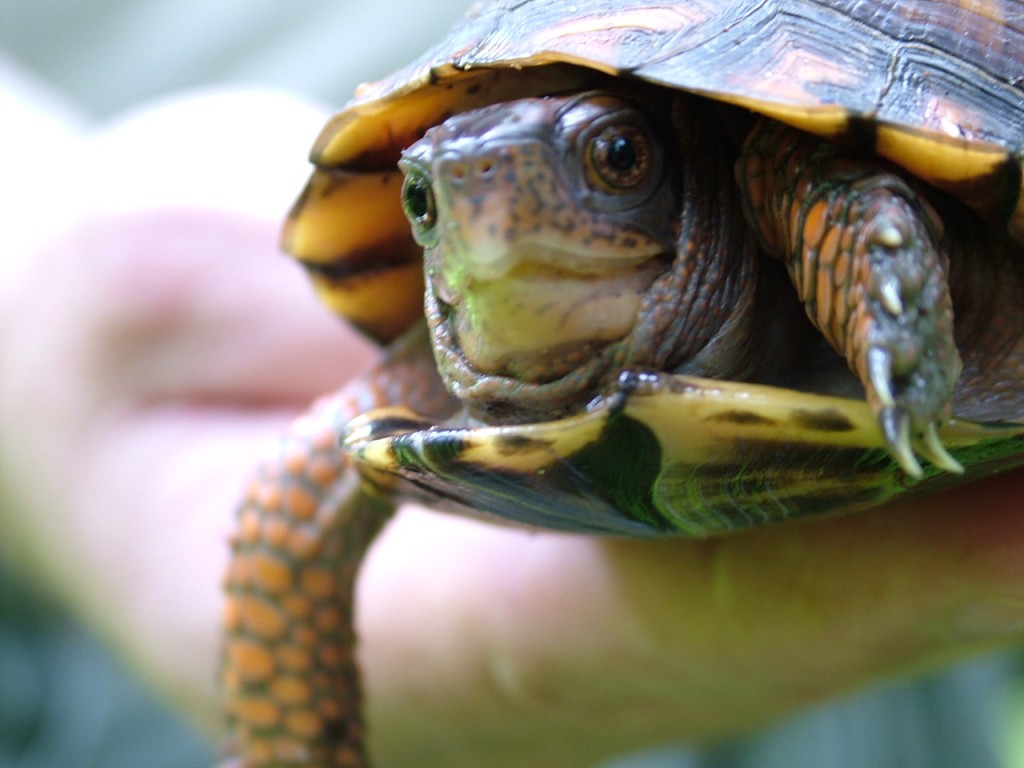A Short Comparison of Hibernation and Brumation
The Difference Between Hibernating Mammals in Deep Continual and Physiological Sleep and Brumating Reptiles in Dormancy with Punctuated Activity
When I teach outdoor programs in the winter it's easy to slip into the habit of suggesting that those animals that don't stay awake and active all winter "hibernate," but this term isn't the most accurate to use. In fact, I wasn't even aware of the fine distinctions of hibernating mammals and brumating reptiles until pretty recently so I thought a blog post might be in order.
Hibernation and brumation are really very closely related, they are periods of dormancy during which an animal becomes physiologically less active, their metabolic processes slow down, and growth stops. However, mammals and reptiles go into dormancy is slightly different ways, thus the terms hibernation and brumation. Here's a quick comparison chart:
| Hibernation (Mammals) | Brumation (Reptiles) | |
| Caused by shortening day length and temperature changes | YES | YES |
| Animal may feed heavily before entering dormancy | YES | YES |
| Build up of fat reserve and lipids before entering dormancy? | YES | YES |
| Feeding and eating stop during dormancy | YES | YES |
| Drinking Water Stops | YES | No |
| Decreased heart rate, body temperature, and metabolism slow or decrease | YES | YES |
| Use stored fat for energy during dormancy | YES | YES/NO (glycogen) |
| Anoxia Tolerant (low oxygen) | NO | YES |
| True Sleep | YES | No |
| Punctuated Activity | NO (most) | YES |
Let's start with how animals know that it's time to go into hibernation or dormancy. There are two sets of factors, endogenous and exogenous. Endogenous cues are biotic and come from inside the animal (hormonal cues, circadian rhythms, etc) and exogenous cues are mostly abiotic and come from outside the animal (photoperiod, temperature, barometric pressure, humidity, etc.). Once certain cues are given then the animal prepares for dormancy (LLL Reptile).

Both reptiles and amphibians prepare for dormancy by eating more. They build up fat reserves in their bodies that can help them survive. Unlike mammals, the reptiles also build up a high level of glycogen in their body tissues as well. Glycogen is a form of polysaccharide or sugar that can be used as energy for muscles. When mammals enter hibernation they rely solely on their fat reserves as energy to see them through winter. However, reptiles do not use fat as their sole source of energy. They mostly use the glycogen in their muscles with their fat reserves playing a greater role in reproduction, egg development, and post dormancy mating (Copeia, Gafney and Fitzpatrick, 1973; Integrative and Comparative Biology, Fitzpatrick 1976). It's even thought that some reptiles need brumation to trigger reproductive processes such as egg and sperm production.
Both reptiles and mammals slow their metabolic processes down significantly during dormancy, but reptiles are better suited for low oxygen environments during this time. Mammals slow their breathing or respiration rates down, but they still need a specific amount of oxygen saturation to survive. On the other hand, reptiles can tolerate reduced levels of oxygen, because of the glycogen in their blood. This is particularly handy because many reptiles bury themselves in the mud or under water, which can have changing or very low oxygen levels (Annual Review of Physiology, Bickler and Buck 2007). Ok, time for a fun and gross fact: some turtles have a modified vent (also called the cloaca or poop shoot) for absorbing oxygen from water. So, they literally can breathe through their butt (tissues) during hibernation. My students think it's funny when I call it a butt snorkel but it's not really a snorkel, more like an increased surface area for oxygen absorption.

Another big difference between hibernating mammals and brumating reptiles is that mammals sleep for the duration of their dormancy. Reptiles don't really sleep, the just go into a period of dormancy that is punctuated with periods of activity. If there is a nice warm winter day they may crawl out on a log to sun or bask and then return to their hibernaculum or dormancy location. Unlike mammals reptiles must drink water during their dormancy period because hey need to avoid dehydration, this is a major part of their need to punctuate their dormancy with activity.
Hibernation and brumation are confusing terms that are often used incorrectly. In fact, there are very few animals that truly hibernate (chipmunks are one example). Most animals go into periods of long sleep with punctuated waking, like bears (but that's a post for another time). The differences between truly hibernating mammals and brumating reptiles are actually quite significant. Hopefully you can now speak about this when walking around in the woods. For more fun facts about wintering amphibians check out my "Wintering Wood Frogs Freeze Solid" blog post.


